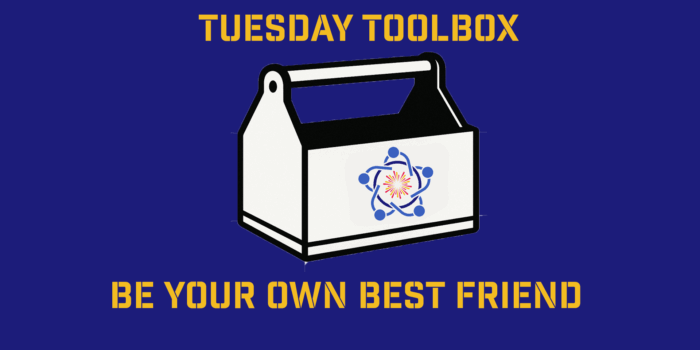For CEOs leading through today’s uncertain and rapidly changing environment, it can sometimes feel like you’re an experienced skydiver – you are reliant on training, experience, and instinct as your guides.
As business leaders, we are all operating in a business environment increasingly defined by swift and radical change: unprecedented and severe weather events, cyberattacks, inflation and market dislocations, a war in Europe with global impacts, and heightened geopolitical risk to name a few. The stakes are high. Failing to have a contingency plan for even the most unlikely, yet highly damaging scenarios can never be left to chance – just like having a methodically, well-packed parachute and reserve, and an accurate altimeter to help you know when to pull your ripcord.
As the CEO of a global S&P 500 company, I know this firsthand. Assessing, anticipating and mitigating risk has always been a significant part of my professional life, whether working in national security and international affairs for the U.S. government or during my nearly three-decade career in the (re)insurance industry.
But the core of my approach to risk—and the perspective I’ve gained from it—stems from my personal passion for skydiving. I’ve been jumping from airplanes since age 18 and I believe there is no better education in the art of preparation and risk management than falling at terminal velocity from over 10,000 feet. Life-altering decisions are made in tenths of seconds; even minor adjustments can have major repercussions. The process of acutely and immediately understanding risk can be overwhelming if you are not mentally and physically prepared.
A critical aspect of every successful jump is preparation – being familiar with the drop zone, the aircraft, mentally visualizing the jump, ensuring your main and reserve parachutes are packed correctly, your harness is secure, and your lines are free and untangled. Success depends on the painstaking preparations that take place long before you even set foot on the aircraft.
This principle equally applies to success in the business world, where the result of similarly diligent hard work and preparation over the long-term is a prerequisite. At its core, my approach to leadership has been underpinned by three principles. They have helped to ensure that my colleagues and I are best positioned to make the necessary and most impactful decisions under high pressure and on short notice—in other words, knowing where to land regardless of the circumstances.
Tenet 1: Live and Lead with Empathy
Like most industries, (re)insurance is a relationship business. In a strategic sense, human capital is more important than developing the right pricing and underwriting models. Although our business is highly quantitative, people are at the core of everything we do.
This kind of empathy must start on the inside; within company walls and woven into the fabric of its culture. For me, this has meant listening and becoming attuned to what really matters to people. Because when you are the CEO, employees’ most pressing concerns may go unspoken or are often “filtered” for you. Taking the time and effort to create an environment where people are truly heard is critical to building strong, inclusive teams. In doing so, I’ve been exposed to a greater diversity of thought and experiences over the years. My colleagues’ stories and the obstacles they have overcome have given me a greater understanding of what they face daily. I’ve learned that the most effective leaders have long abandoned their ivory towers; they are in the trenches, alongside colleagues during difficult times.
For example, I have spent several years of my career running large claims operations and helping customers in the aftermath of severe natural disasters like Katrina. To me, it was always natural to lead from the front, on the ground with our adjusters and our clients. The result of these actions is twofold: one, I gained a tangible appreciation for the remarkable work and dedication of our people, and two, our colleagues felt supported and appreciated as they worked to help our clients through difficult circumstances.
By engaging our employees directly and obtaining a wider collection of perspectives, I’ve seen more creative solutions come to the fore, which is essential in anticipating the unexpected and earning the trust of those who look to you for the way forward.
Tenet 2: Putting Purpose above Tactics
The mission matters. At all points—but especially in challenging times—a sense of purpose can be a powerful motivator. If you want your colleagues to persevere through difficult times, they need to know what they are moving toward and what they are moving for.
This isn’t to minimize the importance of a paycheck. But the greater purpose of our mission cannot be underestimated. It is a powerful force that inspires loyalty and peoples’ desire to go above and beyond.
At many other companies, purpose is a vague value that is ancillary to their mission. In fact, according to McKinsey, roughly 85 percent of people feel they have a purpose but only 65 percent believe they can actually articulate that purpose. In that scenario, leaders are setting themselves and their employees up for mediocrity and burnout.
At Everest, the work we do in (re)insurance is tied to a noble purpose intertwined with the future health of our economies and our society. As I noted earlier, people look to us in times of need and how we react can mean the difference between financial security or catastrophe. We understand the significance of our role and take this responsibility to heart.
Conveying a sense of purpose is hard to do authentically, yet this is where strong leaders shine. You have to buy in and believe; you have to be humble and collaborative, standing alongside your people and sharing in the work it takes to get there. In addition, you must communicate (and even over-communicate) this purpose transparently, reward those who embody this ethos, and recruit talented people for your organization who fit this mold.
And while there is no universal playbook, if you do it right, you’ve got lightning in a bottle. This is when you can work together diligently and effectively, pursuing strategy, not just implementing tactics, no matter the circumstance.
Tenet 3: Blending Agility and Strategic Patience
As underwriters, we must plan ahead, relying on our past experience and due diligence. But we also know that we cannot be inflexible; we are required, and in fact expected to move with the pace of change.
At Everest, agility and strategic patience are two essential qualities of our business. Agility is all about adjusting quickly and coherently to identify opportunities, and pivoting during change, never remaining static in the face of uncertainty. Strategic patience is about being prepared, being proactive and not reactive, understanding the context, seeing the big picture and timing decisions correctly, and not impulsively. By pairing agility and strategic patience, a leader can act effectively at the right moment.
In some cases, this means embracing technological innovation. We are harnessing and implementing new tools like AI and machine learning to proactively identify new risks and come up with solutions. By leveraging advanced analytics and AI-backed modeling, leaders can glean more sophisticated data and uncover innovative ways to meet future challenges.
But we can never forget that, especially in the risk business, technology will never be a crystal ball – it is only a tool. People and culture drive innovation assisted by tools.
Leading with empathy, putting purpose over tactics, and blending agility and strategic patience are the pillars of my leadership philosophy that has proven to be a winning combination over the years. But it hinges on meticulous preparation and planning time and time again. It’s about rolling up your sleeves and getting your hands dirty to model the behaviors you expect from your colleagues. And consistently, conducting business with your mission, and your clients’ concerns top of mind. Most of all, it means approaching jump 1,001 with the same exacting precision and diligence that you did on jump 1 and feeling equally comfortable in the face of uncertainty.



